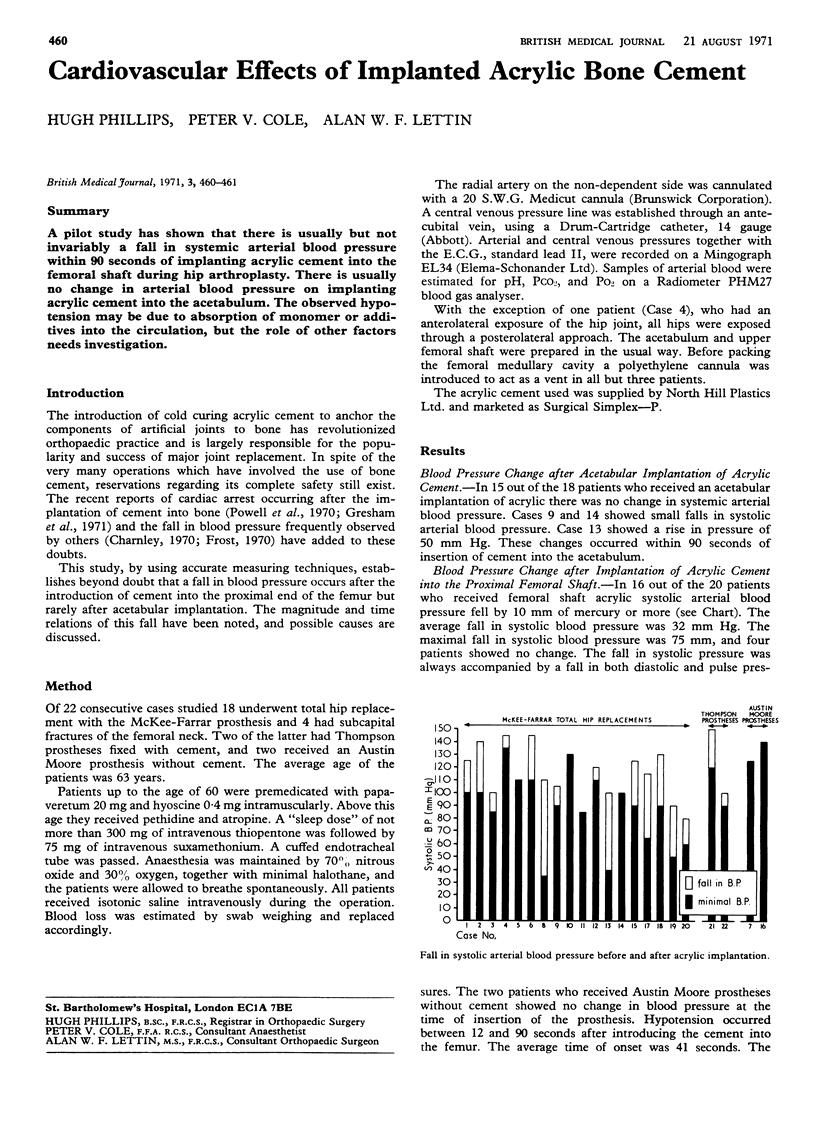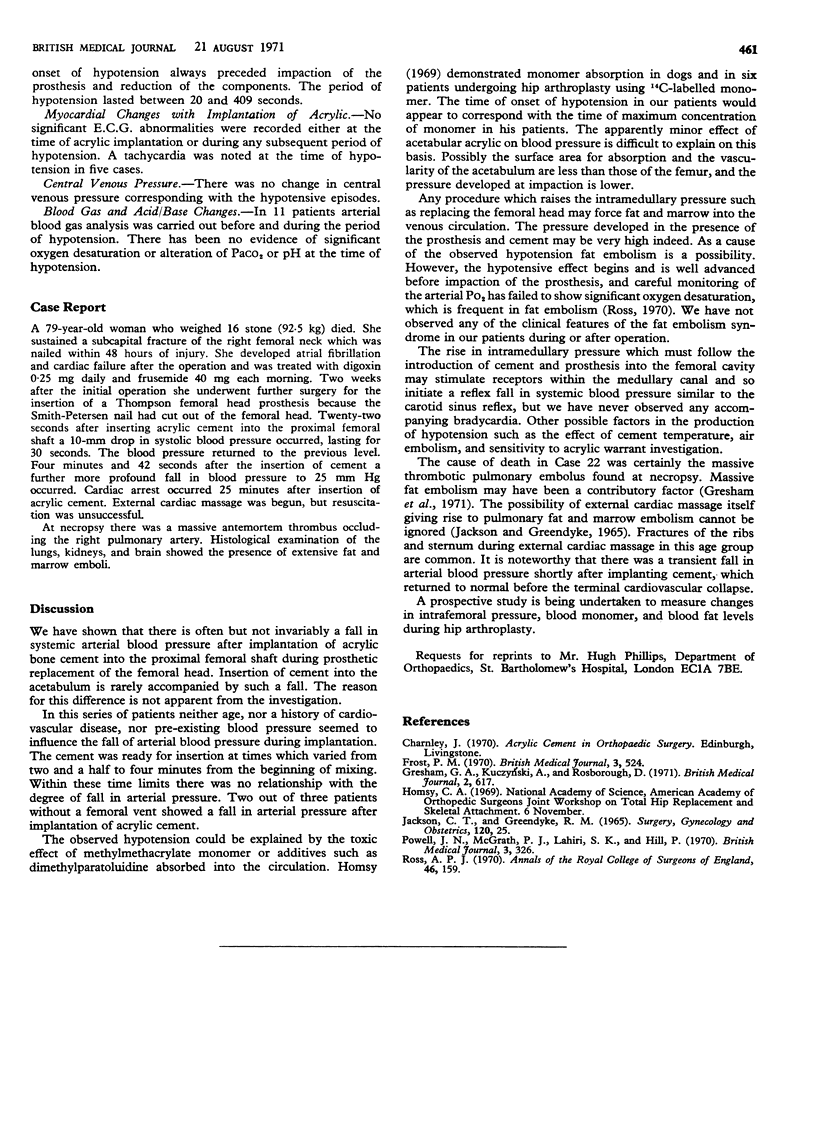Abstract
A pilot study has shown that there is usually but not invariably a fall in systemic arterial blood pressure within 90 seconds of implanting acrylic cement into the femoral shaft during hip arthroplasty. There is usually no change in arterial blood pressure on implanting acrylic cement into the acetabulum. The observed hypotension may be due to absorption of monomer or additives into the circulation, but the role of other factors needs investigation.
Full text
PDF

Selected References
These references are in PubMed. This may not be the complete list of references from this article.
- Gresham G. A., Kuczynski A., Rosborough D. Fatal fat embolism following replacement arthroplasty for transcervical fractures of femur. Br Med J. 1971 Jun 12;2(5762):617–619. doi: 10.1136/bmj.2.5762.617. [DOI] [PMC free article] [PubMed] [Google Scholar]
- Powell J. N., McGrath P. J., Lahiri S. K., Hill P. Cardiac arrest associated with bone cement. Br Med J. 1970 Aug 8;3(5718):326–326. doi: 10.1136/bmj.3.5718.326. [DOI] [PMC free article] [PubMed] [Google Scholar]
- Ross A. P. The fat embolism syndrome: with special reference to the importance of hypoxia in the syndrome. Ann R Coll Surg Engl. 1970 Mar;46(3):159–171. [PMC free article] [PubMed] [Google Scholar]


